Air Force ISR ‘Flight Plan,’ Industry Day Coming: Stealth, Space, Cyber, & AI
Posted on
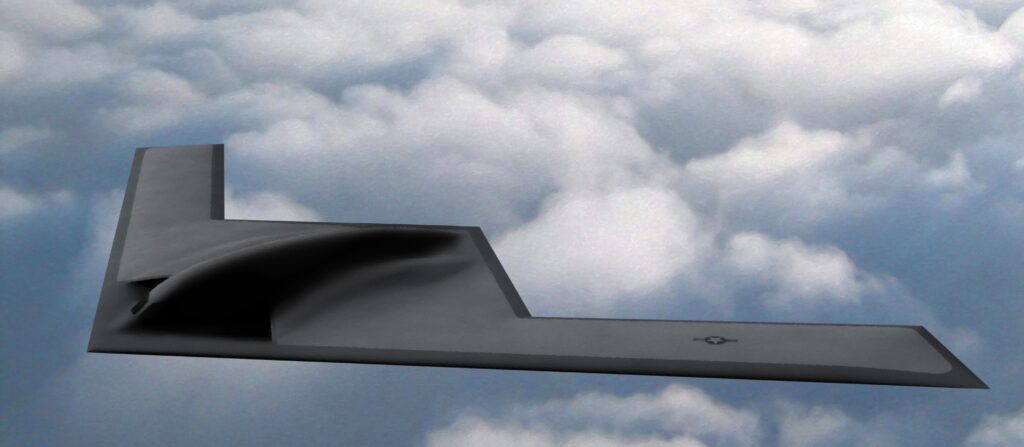
The B-21 bomber may be equally important as a stealthy scout, collecting intelligence deep in enemy airspace.
CAPITOL HILL: The Air Force is finalizing a high-tech “flight plan” for Intelligence, Surveillance, and Reconnaissance investments, the deputy chief of staff for ISR said here. The service can’t keep buying more and more drones to collect more and more data and then hiring more and more human analysts to plow through it, Lt. Gen. Veralinn “Dash” Jamieson told a small group. So the new strategy will make better use of satellites, cyberspace, advanced aircraft like the F-35 and B-21, and even publicly available information on the Internet, as well as artificial intelligence to help analyze the vast amounts of incoming data.
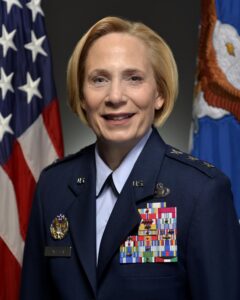
Lt. Gen. Veralinn “Dash” Jamieson
The plan will focus on investments for the upcoming Five-Year Defense Plan (FYDP) but projects out to 2035, Jamieson said. The document should be done this spring, but she’ll preview it at a Feb. 2 industry day. (We can’t go. It’s Top Secret/SCI. Let us know if there are any good unclass bits you can discuss).
“My ISR flight plan looks at how do we actually look at intelligence, surveillance, and reconnaissance from space, air, cyber,” Jamieson elaborated to reporters after she spoke at the event, sponsored by the Air Force Association’s Mitchell Institute. “What is our architecture? What’s the human capital? How do I get to AI and machine learning?”
“Most important to me is, what are other assets we can use besides DoD exquisite?” Jamieson said, referring to the “exquisitely” specialized and expensive systems developed by the ponderous Pentagon acquisition system. “We have not really tapped into the vast array of things you all tap into every single day with publicly available information,” she told reporters.
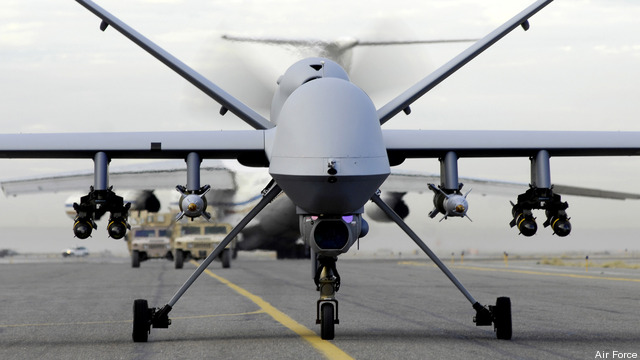
Armed MQ-9 Reaper drone.
Multi-Mission
Jamieson said she’s working closely with Gen. Mike Holmes, head of Air Combat Command, on how to field new technology as fast as possible. Holmes’s headquarters oversees both fighter and ISR forces, but Jamieson wants to blur the line between the two, ensuring that both kinds of aircraft do both missions. The Air Force can’t afford to buy and maintain single-purpose platforms, Jamieson said, nor can it afford to use its multi-role aircraft for just one mission at a time.
Part of the new approach is new equipment. The F-35 Joint Strike Fighter now entering service, and the B-21 Raider bomber now in development may spend more of their time as stealthy spies in hostile airspace, spotting threats and targets for the rest of the force, than they will launching missiles and dropping bombs. “We call the next generation long-range sensor-shooter a ‘bomber,'” said David Deptula, the retired Air Force three-star who heads the Mitchell Institute. “We still talk about the F-35 and the F-22, as if they were just fighters. They’re not.”
At the same time, Jamieson said, the Air Force can do a lot with new ways of using old equipment. For years now, she said, the MQ-1 Predator and MQ-9 Reaper drones have been capable of conducting either reconnaissance missions or Hellfire missile strikes. But the military’s Air Tasking Order (ATO) process still designates any given drone sortie as either ISR or CAS (close air support). The drones can and should do both.
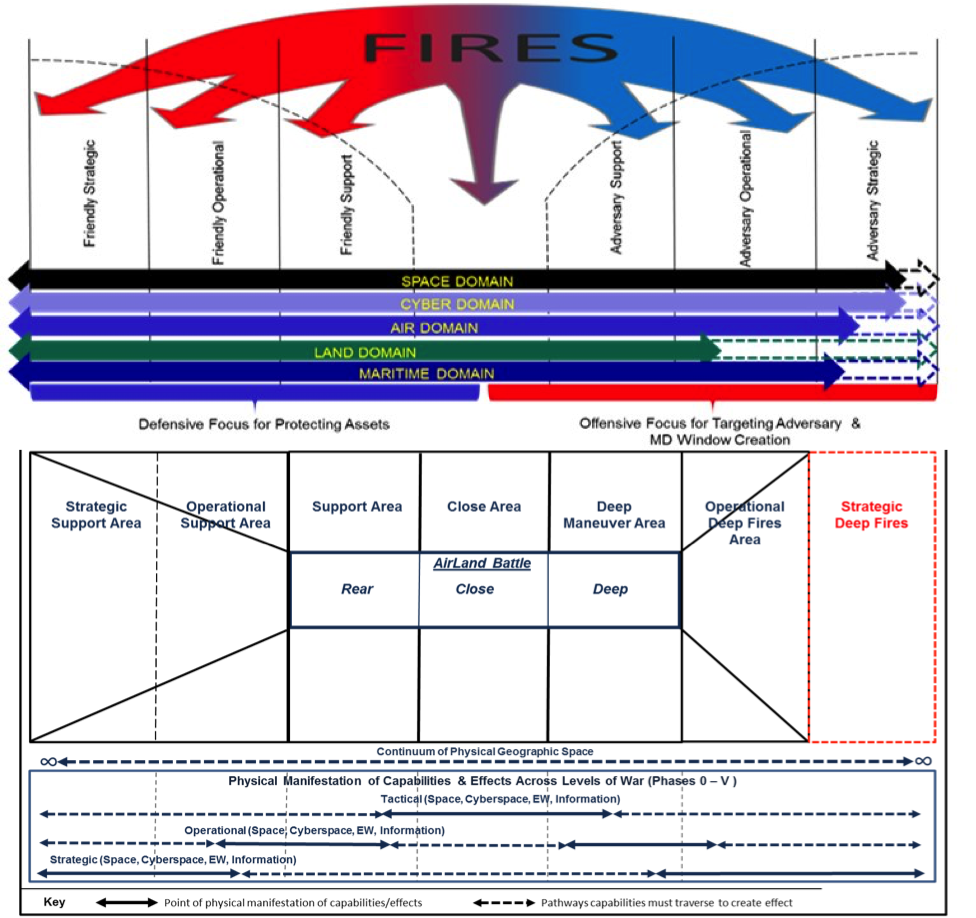
The latest, revised battlefield framework for Multi-Domain Battle. It adds a seventh zone for “strategic deep fires,” areas beyond the Army’s reach, but not the Air Force’s. And it superimposes far-ranging “fires” — from airstrikes and rocket artillery to cyber attacks — over the geographically bounded zones
Multi-Domain
Besides getting more missions out of both existing and future aircraft, Jamieson wants to better integrate airborne ISR with intelligence gathered from space and cyberspace. To that end she’s working with Brig. Gen. Chance “Salty” Saltzman, the Air Force’s point man on a new concept called Multi-Domain Command & Control.
A personal priority for the Air Force Chief of Staff, Gen. David Goldfein, MDC2 seeks to build a single comprehensive network connecting sensors, shooters, and support assets across all three domains the Air Force operates in: air, space and cyberspace. It’s linked to the Army-led Multi-Domain Battle initiative, which Gen. Goldfein has very publicly endorsed. The underlying idea behind both forms of Multi-Domain is that, instead of the services operating in parallel, each in its own predefined jurisdiction, they should all converge on the enemy using every possible avenue of attack.
Coordinating this kind of next-generation joint operation will require collecting, sharing, and making sense of vast amounts of information. “Multi-domain command and control…to me that’s part of how do you fuse data and get it out to the tactical edge,” Jamieson told reporters. “How do we actually go in with space integrated in there, integrating with cyber, from an ISR support and operations perspective?”
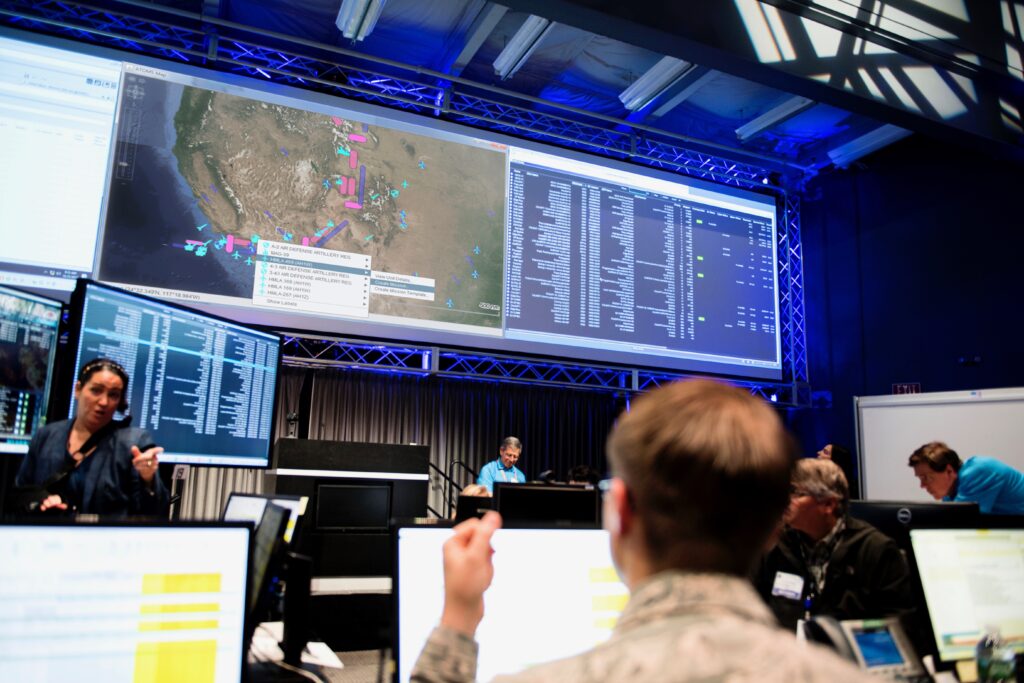
Lockheed Martin’s third MDC2 wargame
Data-Driven
As part of its Multi-Domain Command and Control initiative, Jamieson said, over “the next year or two” the Air Force will bring together ISR airmen and data scientists to experiment with “data to decision” software. The goal: streamline the process of turning masses of raw data into useful insight for decision-makers.
Today, Jamieson said, what data you get all too often depends on what aircraft you happen to have handy and whatever sensors they happen to carry. Then human analysts must laboriously winnow out valuable intelligence from vast amounts of otherwise irrelevant data. Instead, the service “must look at data as a weapon,” taking how it’s gathered and used as seriously as any aircraft or explosive.

Gen. David Goldfein
On the front end, part of the solution is to make ISR collection more customizable to commander’s actual, immediate needs, Jamieson said. One example is the “Open Mission System that lets the MQ-9 “plug and play different sensors.”
On the back end, part of the solution is artificial intelligence to help the humans sort the huge amount of data. Finding patterns and anomalies in huge datasets is precisely what machine learning and big data science do best, which will free up the humans’ time to do what they do best, using their creativity and intuition. Among other things, she said, Jamieson’s working with the Pentagon’s Project Maven, aka the Algorithmic Warfare Cross-Functional Team, to develop new intelligence-analysis tools.
“When I came in, the chief (Gen. Goldfein) and I had a very frank conversation (about) how are we going to continue with the next generation ISR capability,” Jamieson said. “We’ve done things very manually, adding airmen to tackle issues, and we can’t continue to do that.”
Subscribe to our newsletter
Promotions, new products and sales. Directly to your inbox.
